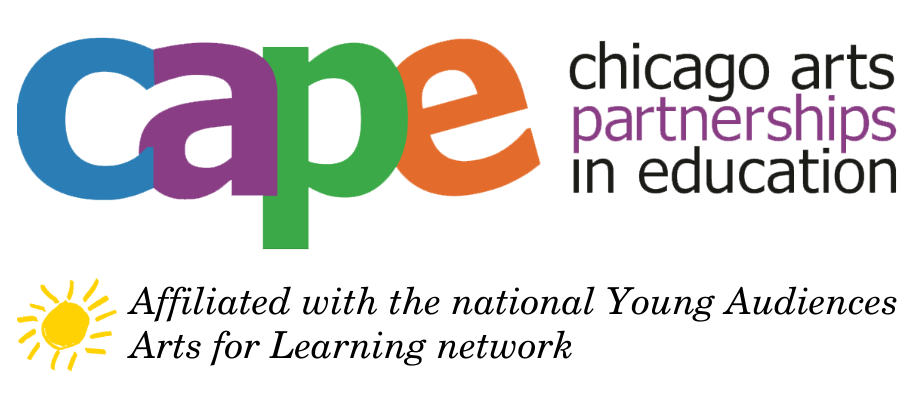Arts Integration is at the heart of all CAPE programs. CAPE teaching artists and classroom teachers collaborate to integrate music, visual arts, dance, digital media, and drama into their academic lessons in order to improve academic and social-emotional outcomes such as creativity, critical thinking, problem solving and collaboration skills.
HOW CAPE DOES ARTS INTEGRATION
Arts Integration can be challenging! Done well, it requires time, commitment, thoughtfulness, creativity, and flexibility from students, teachers, and artists alike. Watch this video for a quick explanation of how we approach arts integration in our classrooms.
1 Teacher + 1 Teaching Artist
In our practice, teachers and teaching artists collaborate. Together, they address academic and artistic questions and challenges. Building on these ideas, they plan an arts integrated curriculum that moves in and out of arts and non-arts subjects as the project progresses. The artist and teacher work together with the students, co-teaching throughout their partnership. The partners are able to see and experiment with multiple strategies of student engagement each other bring to the classroom.
What Arts Integration Accomplishes
- Young people who make personal, lasting connections to what they learn in and outside of school, and who are better prepared for adulthood in the 21st century
- Teachers who have a greater capacity to reach all of their differentiated learners through a wide variety of creative strategies and to assess their students in ways that generate clear understandings for teachers and generate further learning for students
- Teaching artists who are more adept at supporting the needs of students, teachers, and school communities through collaborative artistic exploration
- Families who are more engaged in their children’s educations and wider school community
- Best practices defined through experimentation and research that contribute to future arts programming supported by CAPE and similar organizations
Professional Development
Teaching is often an isolated profession, with little chance for dialogue around issues of pedagogy and student learning. As part of all CAPE programs, teachers and teaching artists from schools around the city come together regularly for professional development meetings. There, they can examine others’ work and ideas, share their own successes and questions, and explore new possibilities for teaching and learning with CAPE staff.
The Artist-Researcher
A CAPE Learner is an Artist/Researcher. As an Artist/Researcher, she/he conducts investigations through art and collaboration in order to gain new understandings of the world. In conducting these investigations, the CAPE Artist/Researcher generates questions and reflections; collaborates with a critical eye; shifts flexibly among different roles; creates innovative work that crosses artistic and academic disciplines; and engages others in social interaction and dialogue around arts integration.
Learn More About Our CAPE Classrooms
Work from our CAPE Classrooms is regularly featured in public exhibitions and on our CAPE blog, where you can get learn more about arts integration in action.


